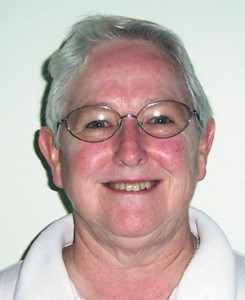Q: Do all churches in Iowa have to use the same words, prayers, and do the same things (procedures)? — Kaylin Treanton, St. Paul the Apostle Catholic School, Davenport.

A: Several years ago the Vatican issued new rules for translating from Latin into the language of different countries. There aren’t many changes in Latin between the second and third editions of the Roman Missal, but the changes in English are extensive. What you say at Mass has changed, including the words in the Glory to God, the Creed, and the responses to the preface dialogue. Our priests have had the most and more difficult changes in their prayers during Mass.
Yes and no Kaylin. We use the same words and prayers during the Mass all over Iowa and in the USA. Catholic means universal, so the changes took place within the different language groups of the world. In the universal Church we have the same teachings and the same Mass throughout the world, but different languages. We also have to adapt ourselves to a particular culture and location. If you have an opportunity to look at the missal, you can see that the readings from the Bible are planned out for each day of the year. Through the readings proclaimed during the Mass, Catholics go through most of the Bible in about three years.
Remember, four Bible readings are proclaimed during each Mass over the weekend: one from the Old Testament, one from Psalms, one from New Testament letters and one from the Gospel.
The homilies are written by the priest, so it’s usually not the same homily but related (since they are based on the same readings).
The Mass is the most sacred act in which we can participate and we need to “have full, conscious and active participation.” The basic structure of the Mass has four parts — two main parts and two framing rites:
• Introductory rites
• Liturgy of the Word (biblical readings, homily, Creed, intercessions)
• Liturgy of the Eucharist (preparation, Eucharistic Prayer, Communion Rite)
• Concluding rites
The Creed could be the Nicene or Apostles’ Creed. Just as at times the priest has several prayer options to choose from. Still, our response remains the same.
Now, if you are talking about prayers before or after Mass, then each parish is different. Some parishes may say the rosary before Mass; others may have a stewardship prayer. Other parishes may say the vocation prayer after Mass. This is individual to a parish and practices. But the prayers of the Mass are, for the most part, the same.
You also asked about Iowa churches following the same procedures. The priests’ body movements are pretty much the same, but may differ according to age and health. But now let’s consider altar servers, or lack of them. They may be boys, girls or a combination of boys and girls. We may also have some of our older adults who serve the Mass. There is a great variety of how one serves Mass from parish to parish and this is usually based on past practice of a parish or what the priest prefers.
I really thought you gave me an easy question. But the more I wrote and thought, the more I discovered that the question was much more difficult. Thanks for making me think of the parts of the Mass and the liturgical greetings, Penitential Act, Kyrie, final blessing and dismissal — which may differ. You inspired me to look again at the prayer cards that we have in our parish pews. Thanks for letting me think about the liturgy where we are fed by the Word and Christ is present in the community and the person of the priest and we are then fed by the Eucharist. We are to be transformed by Christ and carry him to all we meet. We are the new evangelizers.
— Mary Wieser, director of Faith Formation for the Diocese of Davenport
(Students in grades kindergarten through 12 are invited to submit questions about the Catholic Church for The Catholic Messenger’s Young & Curious feature. Send them to arland-fye@davenportdicese.org or The Catholic Messenger, 780 W. Central Park Ave., Davenport, Iowa, 52804.)







